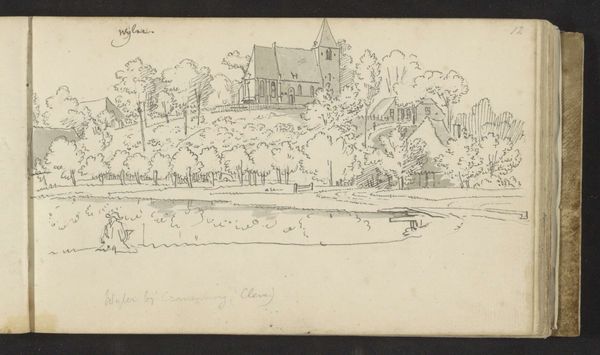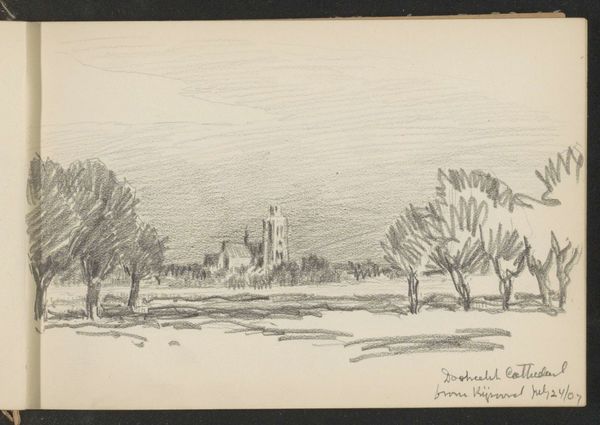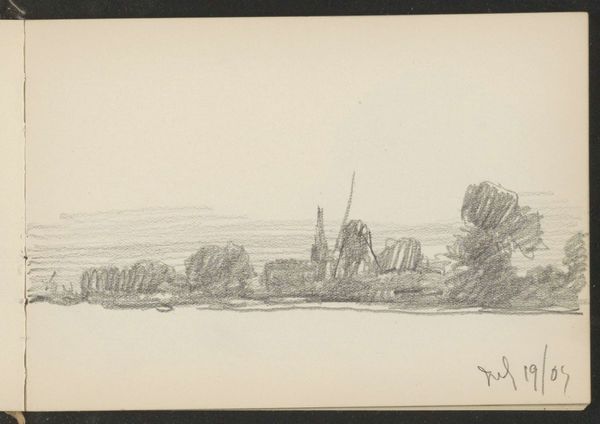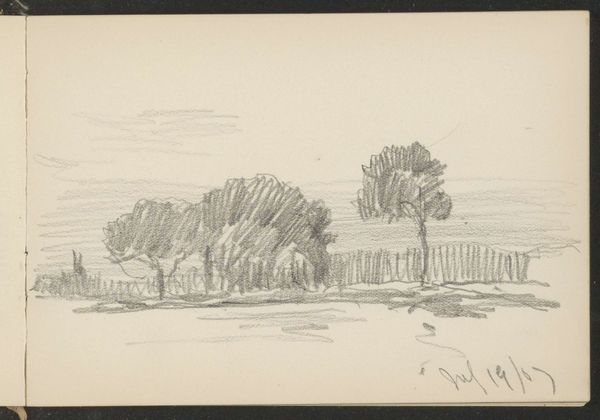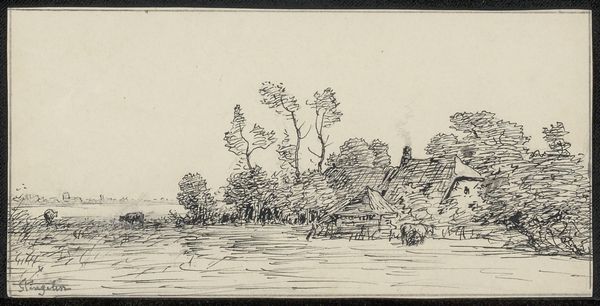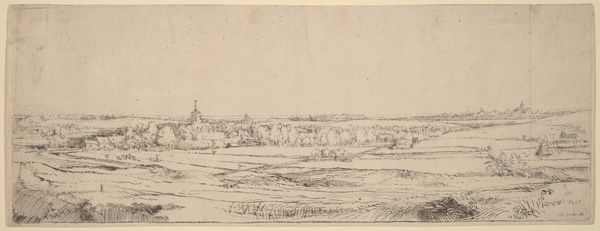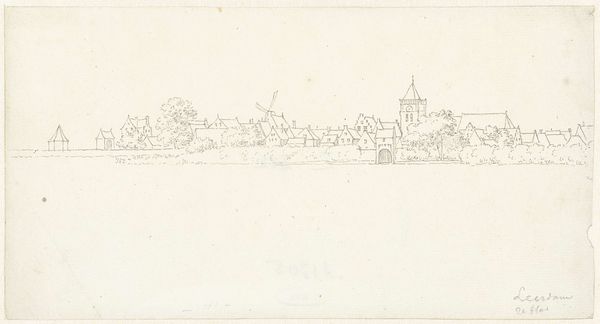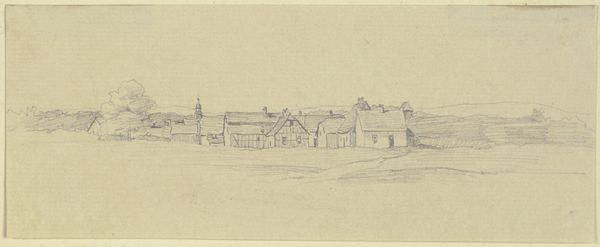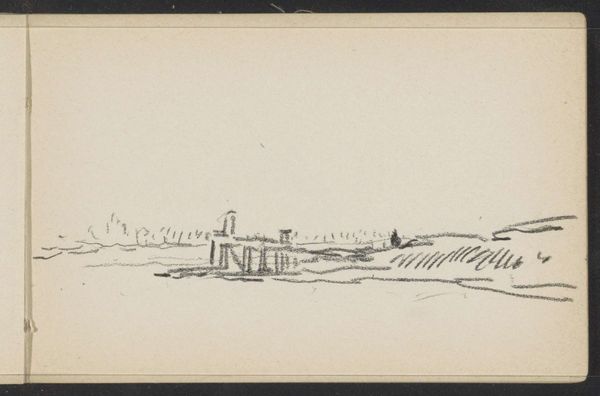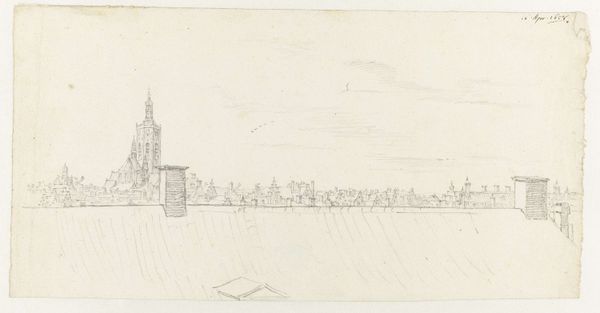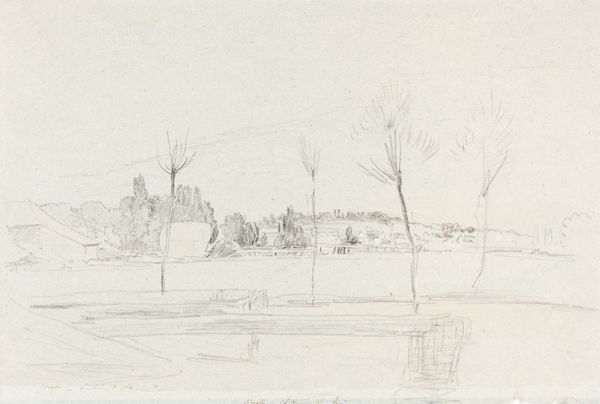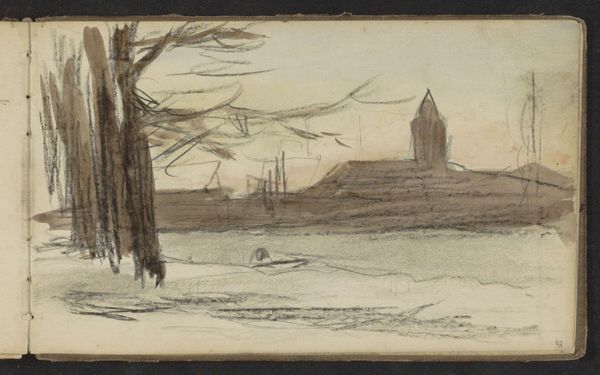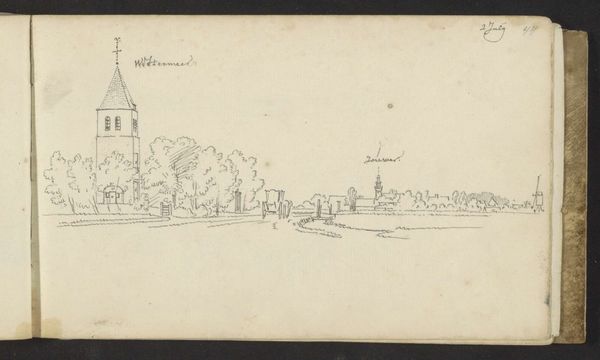
drawing, pencil
#
drawing
#
landscape
#
form
#
pencil
#
line
#
cityscape
#
realism
Copyright: Rijks Museum: Open Domain
Curator: Today, we're looking at "Gezicht op Veere met de Campveerse Toren" which roughly translates to "View of Veere with the Campveerse Tower" created by Alexander Shilling in 1923. Shilling rendered the artwork with pencil, giving it a slightly melancholic aesthetic. Editor: Yes, melancholic is a good word. The greyscale drawing, though seemingly simple, evokes a strong sense of place. It feels quiet, almost deserted. The lines are loose, capturing the essence of the buildings and landscape without much detail, which lends to this air of solitude. Curator: Shilling was interested in capturing not just the physical form, but also the socio-political elements influencing urban and rural spaces. Note the prominence of the Campveerse Tower. For centuries, it has symbolized trade and power within Veere. How might the tower's silhouette implicate notions of maritime identity? Editor: That’s where it gets more interesting. The tower looms over what looks like fallow fields. This placement visualizes a narrative around economy, resources, and labor. Was this town thriving, or like many others in that period, facing economic hardship? Curator: The date is interesting, as well. 1923 was a volatile time in Europe, recovering from World War One, seeing major shifts in economic and social structures. This backdrop undoubtedly influenced Shilling’s eye. Consider also, the use of pencil— a readily available medium suggesting accessibility of artmaking to the masses. Editor: Absolutely, and the fact that it’s a drawing, likely a sketch, means it was potentially done *en plein air*, putting Shilling right in that landscape. How does his perspective – the viewpoint he chooses – shape our understanding of the power dynamics at play? Is this the gaze of someone inside or outside that society? Curator: The composition itself raises questions. There's a strong emphasis on form; note the horizontal lines, the sharp angles of the tower set against the more organic shapes of the trees. What could such a calculated structuring mean to those who interpret it? Editor: For me, the image serves as a reminder that landscapes are never neutral. They're imbued with histories, social realities, and often, disparities in power that deserve examination. Curator: It highlights how seemingly simple works can act as critical visual documents, sparking vital discussion, especially when situated in proper contexts. Editor: Right. Even a quick pencil sketch offers endless insights when viewed through an intersectional lens, reminding us art always speaks to identity and power.
Comments
No comments
Be the first to comment and join the conversation on the ultimate creative platform.

